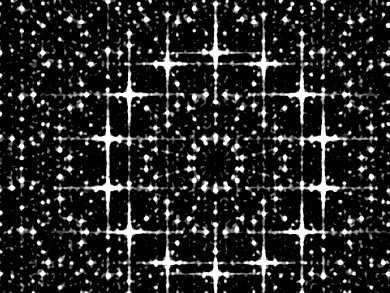Wolf Widdra, Max-Planck-Institut für Mikrostrukturphysik, Halle, Germany, and colleagues from the Martin-Luther-Universität Halle-Wittenberg have demonstrated a new way to grow ultrathin quasicrystalline films: Frustration at the interface between two periodic materials can drive a thin film into an aperiodic quasicrystalline phase. Quasicrystals are crystalline structures that show a regular order but lack periodicity.
A thin layer of BaTiO3 was deposited atop a surface of platinum atoms arranged in a hexagonal lattice. The mismatch in atomic arrangement between the two layers forces the BiTiO3 to arrange its atoms into dodecahedrons. Inside, the atoms arrange themselves in a series of triangles, squares, and rhombi.
According to the researchers, this example of interface-driven formation of ultrathin quasicrystals from a typical periodic perovskite oxide my lead to a broader range of quasicrystal materials with so far untold uses.
- Quasicrystalline structure formation in a classical crystalline thin-film system,
Stefan Förster, Klaus Meinel, René Hammer, Martin Trautmann, Wolf Widdra,
Nature 2013, 502, 215–218.
DOI: 10.1038/nature12514




